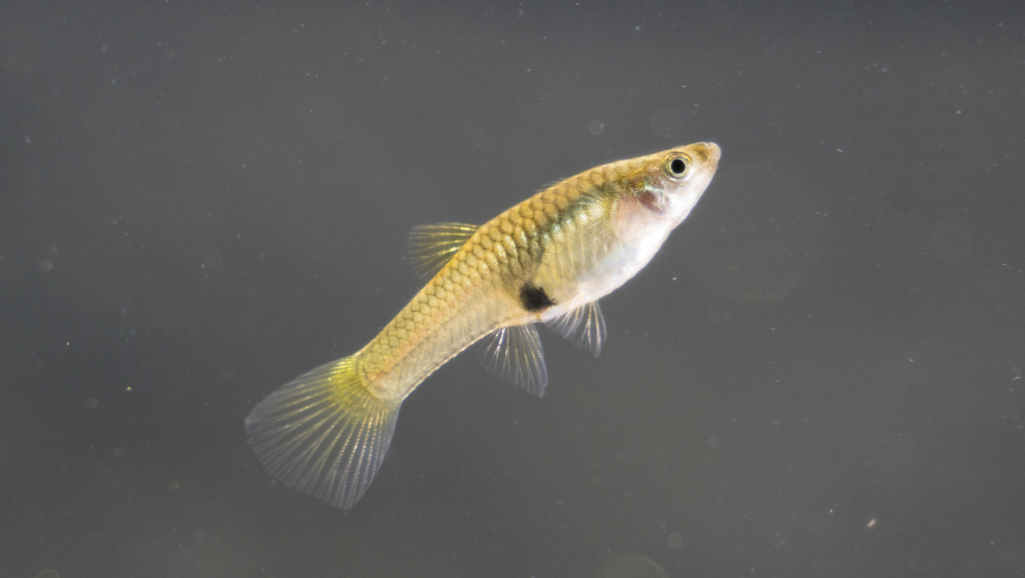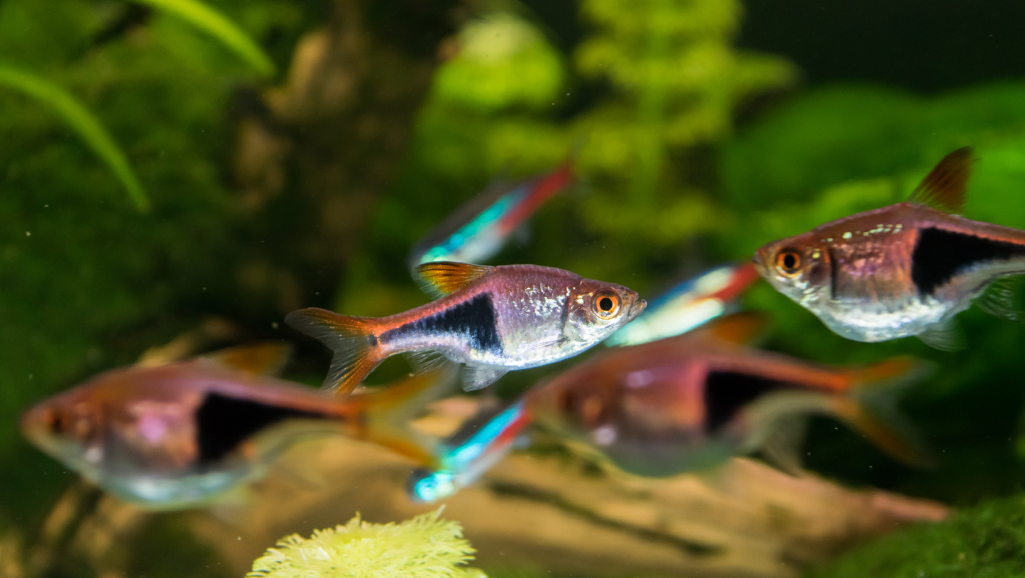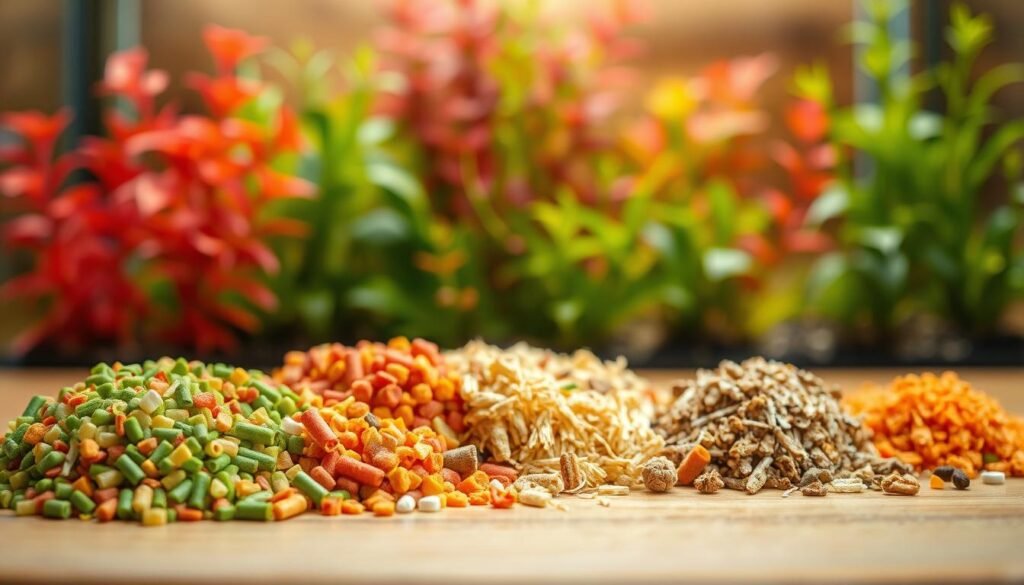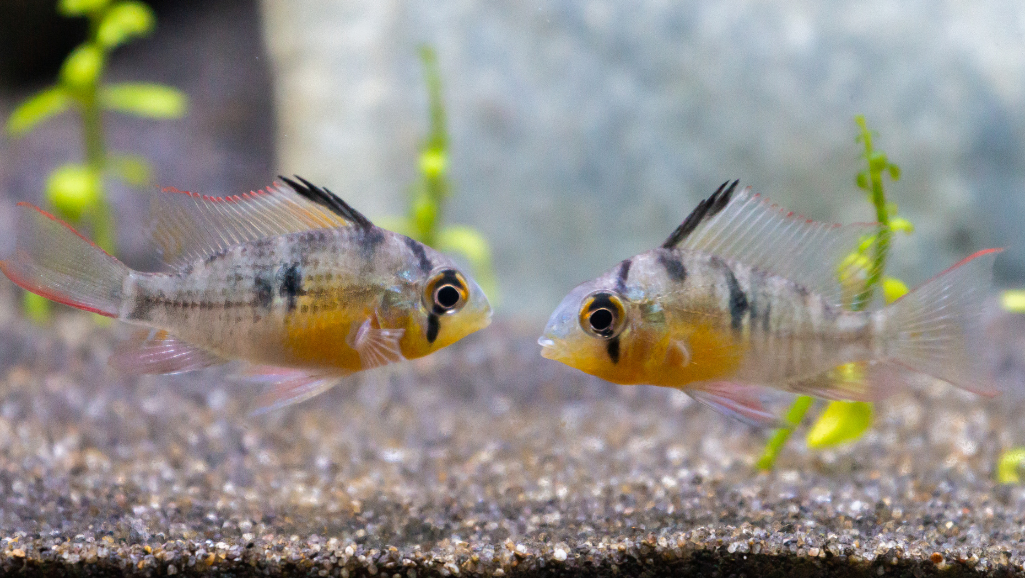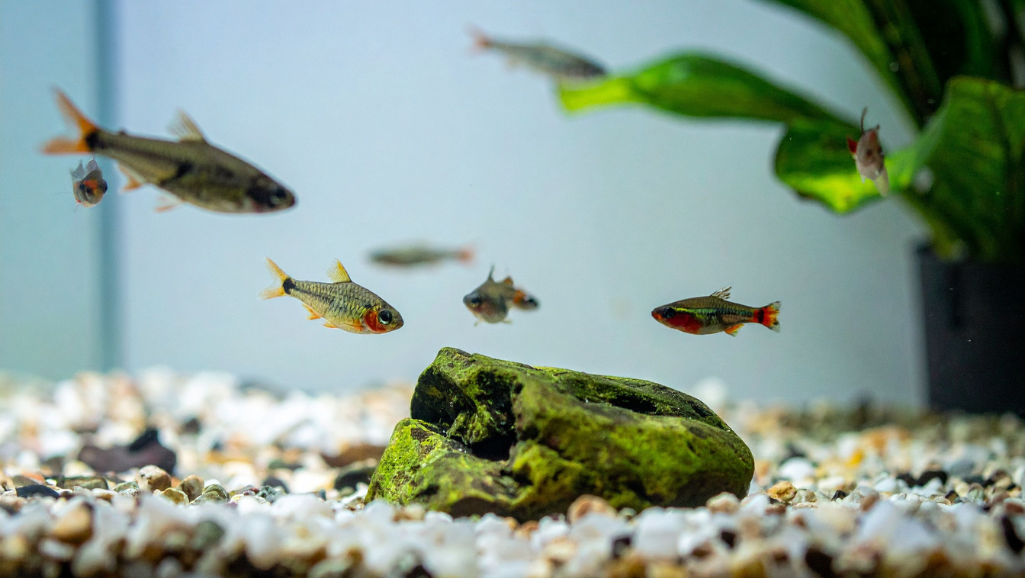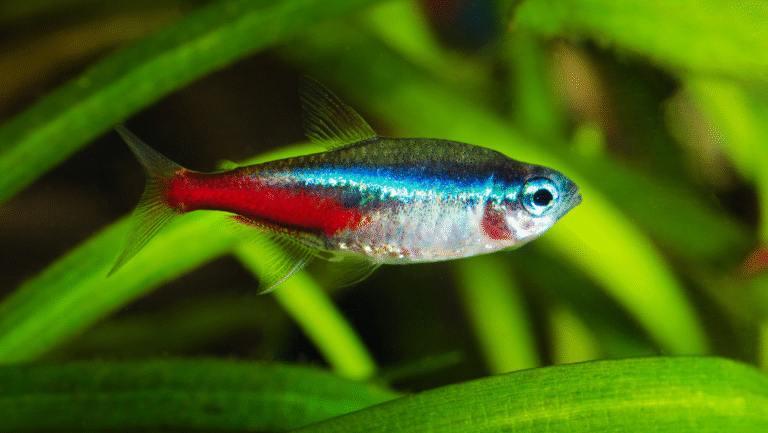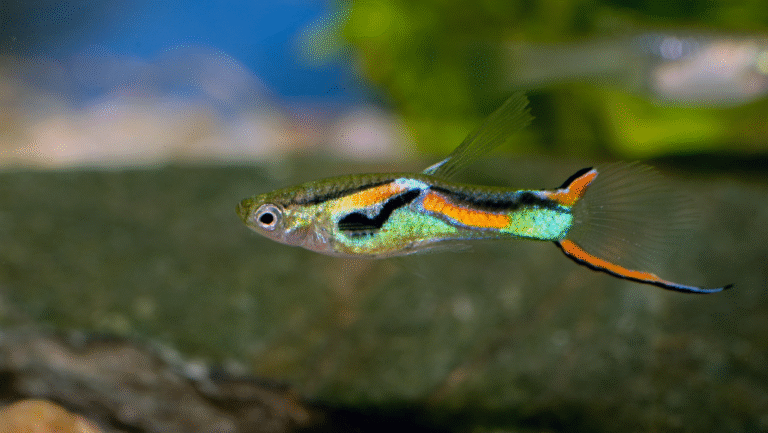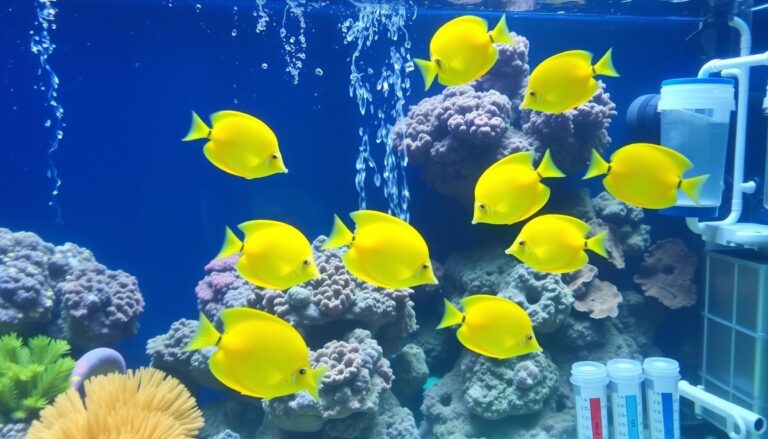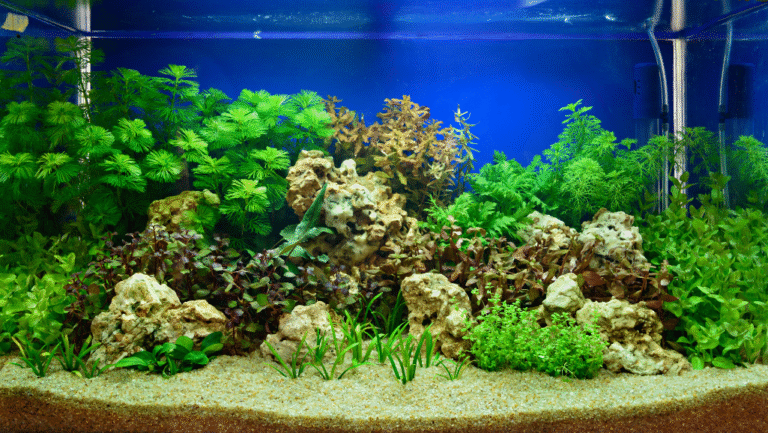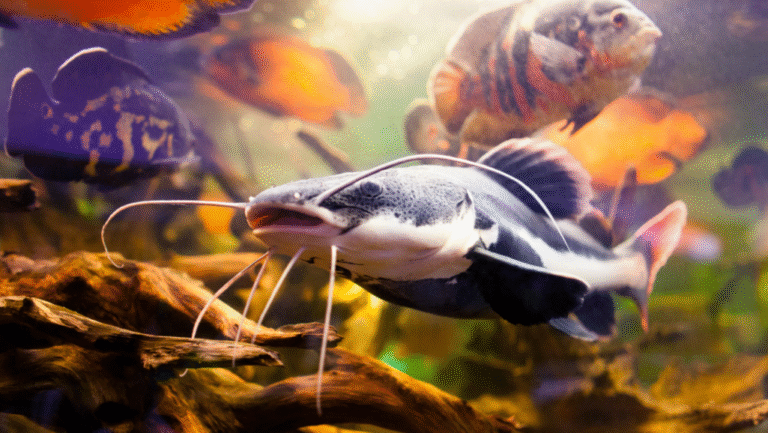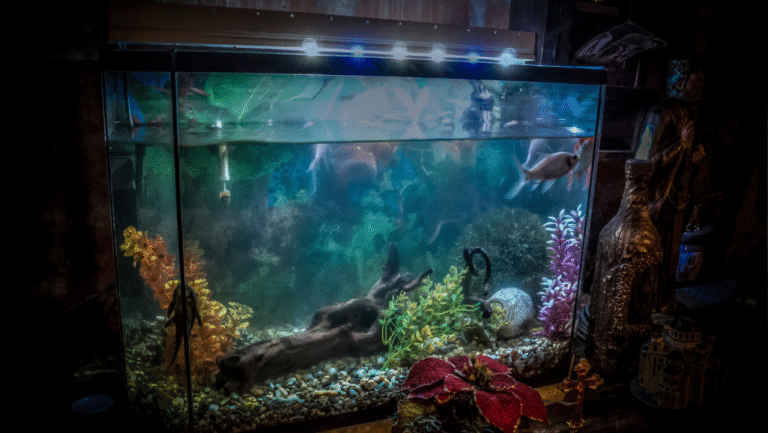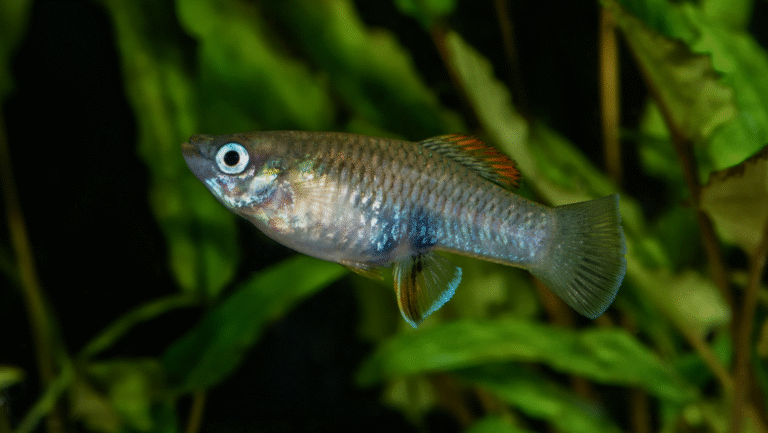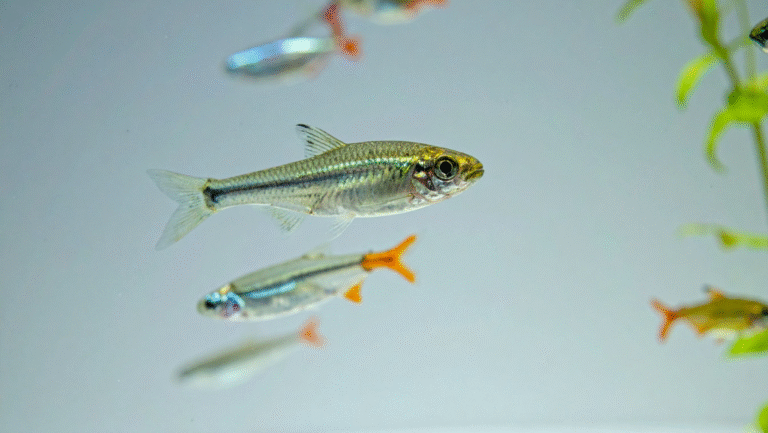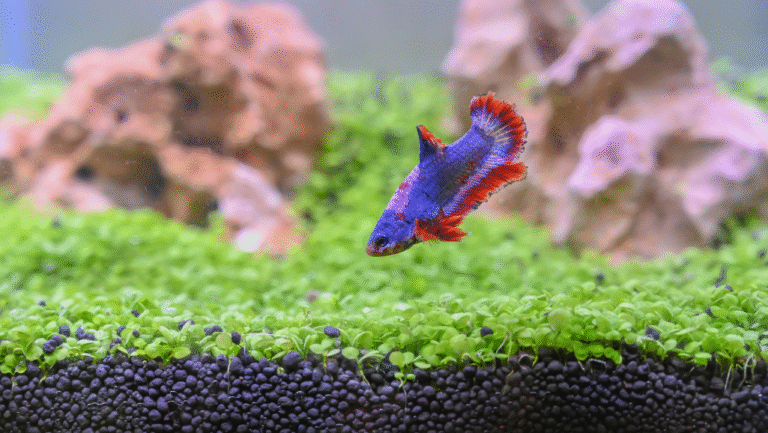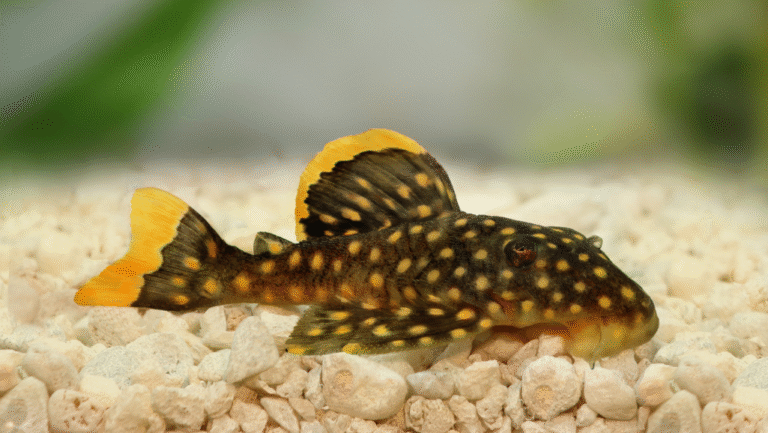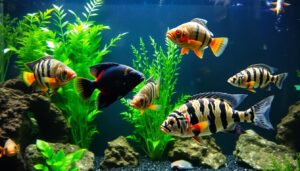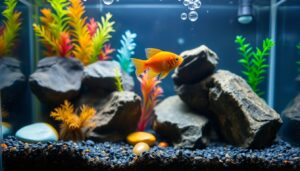Meet a tiny wonder for your home aquarium. Poecilia wingei brightens small tanks with dazzling colors and lively movement. These hardy, beginner-friendly livebearers thrive in typical room-temperature setups and make excellent choices for planted nano tanks and community aquaria.
The name honors john endler, who reintroduced the species from Venezuelan streams in 1975 (see specialty sources for lineage). Males remain slim at about 1 inch with showy fins and vivid patterns, while females grow larger—commonly near 1.5–1.8 inches—with rounder abdomens suited to carrying fry.
Endler’s Livebearer breed frequently—roughly every 20–30 days—so expect periodic batches of fry when you keep mixed groups. Maintain about one male per 2–3 females to reduce harassment, and aim for stable water chemistry (pH ~6.5–8.5) to keep colors bright and behavior calm.
For hobbyists and community tanks alike, these endler livebearers add energetic color without complex care. Note: they are a distinct species often confused with guppies—avoid mixing stocks if you want to preserve pure poecilia wingei lines.
Key takeaways
- Endler’s Livebearer (Poecilia wingei) is a small, colorful species ideal for beginners and planted tanks.
- John Endler reintroduced the fish to hobbyists in the 1970s; check lineage when buying.
- Males ~1″ with flashy fins; females ~1.5–1.8″ and rounder-bodied.
- Frequent breeders—plan for fry and use a 1:2–3 male:female ratio.
- Tolerant of a range of water conditions (pH 6.5–8.5) but prefer stable parameters.
Start Here: How to Keep Poecilia wingei Thriving Right Now
Set stability first. Keep water chemistry steady (pH ~6.5–8.5) and avoid sudden temperature swings — stable conditions reduce stress and keep color and behavior lively for Endler livebearers.
Pick a tank that fits your goals: a 5–10 gallon tank works for a small starter group, while a 10–20+ gallon makes it far easier to manage rapid reproduction and maintain water quality as your colony grows.
Provide gentle surface movement for oxygenation. Use a quiet sponge filter to get filtration without strong currents; it protects fry and supports beneficial bacteria.
- Temperatures: aim for a steady 72–78°F; room-temperature setups are fine if your room stays stable, but add a heater if nights dip into the high 60s °F.
- Stocking: one male to 2–3 females reduces chasing and encourages natural behavior in a mixed group.
- Routine: feed small portions twice a day, perform weekly 20–30% partial water changes (adjust by bioload), and test water parameters at the same time each week.
Daily checklist: observe surface activity, clarity, and social interactions; tidy uneaten food quickly. Small, early adjustments to flow, feeding, or water changes keep your fish healthy and your aquarium stable.
Know Your Fish: Identification, Types, and Names Hobbyists Use
— helpful for spotting male courtship displays and basic size differences.
Recognizing different types and sexes helps you spot quality stock at a glance. Adult males are compact (around 0.8–1.0 inch), slim, and develop vivid coloration with ornate fins; females are noticeably larger (commonly 1.5–1.8 inches), rounder in the belly, and more muted in color.
Male coloration often begins at a few weeks of age (color deepens by maturity). Many males develop dark edging or a “sword-like” margin on the caudal fin used in courtship and dominance displays.
Hobbyists use the term class N to indicate documented purebred Endlers (pure poecilia wingei). By contrast, “endler guppy” usually refers to hybrids with Poecilia reticulata — know the distinction when buying to protect line history and breeding goals.
Popular varieties and quick facts
- Patterns: black bar, tiger, cobra, El Silverado, and lime green are commonly used variety names among hobbyists.
- Species facts: Poecilia wingei typically lives about 2–3 years with good care.
- Tip: Colors and pattern placement vary by strain; always ask sellers for lineage or class N documentation if you want pure wingei traits.
“The name honors john endler, whose rediscovery brought wingei to hobbyists.”
Endler’s Livebearer Care Setup: Tank, Water, Plants & Equipment
Start with stability: the right tank volume, reliable equipment, and a few live plants make daily care straightforward and protect both color and health.
Tank size that grows with your population
Choose a tank based on your goals: a 5–10 gallon tank is fine for a small starter group, a 10-gallon comfortably houses a trio (one male, two females), and a 20+ gallon is much easier to manage as fish reproduce and fry accumulate.
Stable water parameters
Keep temperature steady (72–78°F is a safe target) and pH around 6.5–8.5. Endler’s livebearers tolerate a range of hardness, but stability matters more than hitting a single “perfect” number—use a heater for small tanks to avoid night-time dips.
Aquascaping that works
Leave open surface areas for feeding and swimming while adding dense planting and sight-breaks to lower stress. Useful plant choices: Java moss (easy), Amazon sword (moderate), and floating plants (for shade and fry cover).
Smart equipment choices
Prefer low-flow filtration to protect fry and preserve delicate fins. A sponge filter is ideal: gentle flow, excellent biofiltration, and safe for newborn fry. Pair it with a reliable thermometer and basic test kits (pH, ammonia, nitrite, nitrate).
“Build a system that’s beautiful and forgiving, so your livebearers flourish.”
- Setup checklist: tank (5–20+ gal depending on goals), sponge filter, heater (72–78°F), thermometer, and test kits.
- Plants: Java moss, guppy grass, hornwort, and floating species provide cover and biofilm for fry.
- Priority: stable water chemistry and regular small maintenance beats flashy gear every time.
Stocking with Confidence: Ratios, Community Tank Mates, and Space Planning
Plan your stocking to support long-term harmony and to reduce chasing in mixed groups. Start with a clear ratio: one male to 2–3 females so energetic courting won’t overwhelm females and your community stays peaceful.
Use tank size to future-proof your plans: a 10-gallon works well for a trio; a 20-gallon comfortably supports a small colony (roughly 6–9 fish) as your population grows and fry accumulate.
Choose peaceful companions
Pick calm, small species that occupy different water levels to avoid competition. Good matches include neon tetras (mid-level schooling), harlequin rasboras (mid-level), zebra danios (active mid/surface), Corydoras catfish (bottom dwellers), and small plecos (algae control). Avoid large or fin-nipping species and keep guppies separate if you want to prevent hybridization with endler livebearers.
Manage fast-growing populations
Expect fry and plan for them from day one. Dense planting, floating cover, and spawning mops greatly increase fry survival when you want to grow your numbers. If you need to limit population growth, focus on ethical options: separate sexes, rehome juveniles to local hobbyists or clubs, or increase tank volume.
Be cautious with “biological controls.” While some keepers mention gentle predators (e.g., African dwarf frogs) to reduce fry, these choices can introduce other care needs and ethical concerns—only use them with full research and preparedness.
“Match numbers, mates, and layout to enjoy a calm, colorful display.”
- Stocking rule: one male : 2–3 females for balance and reduced harassment.
- Tank guidance: trio in 10-gallon; 6–9 fish in 20-gallon depending on plants and filtration.
- Hybridization: keep guppies separate if you want to preserve pure poecilia wingei lines.
- Population control: track additions and births; rehome or trade juveniles ethically rather than releasing them.
Feed for Color and Health: Daily Diets Endlers Devour
Feed with purpose: small, varied portions support bright color and overall health. Endler livebearers accept quality flakes, micro pellets, Repashy gel foods, and daphnia—choices sized for surface feeders and occasional grazing.
Keep portions light and consistent: feed twice a day and stop once the fish finish within a few minutes to prevent excess waste and protect water quality.
Daily feeding example
Morning: a pinch of high-quality flakes or micro pellets (enough they finish in 2–3 minutes). Evening: a small serving of frozen/live treat (baby brine shrimp or daphnia) or a gel food portion to boost color and condition.
- Staple rotation: rotate flakes, micro pellets, gel foods, and occasional daphnia to provide balanced nutrition.
- Variety boosts color: include carotenoid-rich foods and live/frozen treats (baby brine shrimp, cyclops) weekly to intensify hues and improve immunity.
- Fry care: feed powdered diets, infusoria, and crushed flakes or newly hatched brine shrimp multiple times daily until fry can accept larger foods.
- Plants help: live aquarium plants provide biofilm and infusoria that supplement natural grazing for both adults and juveniles.
Foods to avoid & handling tips
Avoid oversized pellets, oily human foods, and overfeeding. Thaw frozen foods fully and rinse if they contain preservatives; keep a clean feeding routine to protect water.
“Let color and activity be your compass—when foods and variety are dialed in, colors pop and schooling feels alive.”
Breeding Made Simple: From Courtship to Raising Fry
With a few straightforward steps you can turn a standard tank into a safe maternity environment for poecilia wingei fry.
Timing matters. Expect females to drop fry about every 20–30 days; slightly warmer water shortens the interval. Track timing so you can free up space and food for the next batch.
Quick breeding timeline
- Courtship & mating: males display colorful fins and chase; watch for frequent courting behavior.
- Gestation: roughly 20–30 days (varies by temperature).
- Birth: live young appear fully formed and active.
- Fry care milestones: infusoria/powdered foods → crushed flakes/newly hatched brine → crushed micro pellets as they grow.
Maximizing fry survival
Stage the nursery using dense plants (Java moss, guppy grass, water sprite) and spawning mops; add a pre-filter sponge or use a breeder box to protect newborns from pumps and adult predation.
Quick fixes for common problems: if ammonia spikes after a birth, do small (20–30%) water changes and add extra surface aeration; if fry are disappearing, increase cover or temporarily move adults to another tank.
First foods for babies
Start fry on infusoria and powdered diets for the first days, then graduate to crushed flakes and newly hatched brine shrimp. Feed small portions multiple times daily to support rapid growth without fouling the water.
What to do with juveniles
Monitor growth; juveniles around 0.5–1 inch can be rehomed, sold, or shared with local hobbyists. Keep records—date of birth, parentage, and growth notes—to preserve line integrity and help others choose healthy stock.
Tip: Keep females well-fed and stress-free, maintain a 1:2–3 male:female ratio, and use gentle filtration to improve fry survival.
- Expect a drop every ~20–30 days; monitor temperature and space.
- Use plants, mops, and sponges to boost survival rates.
- Rotate tiny foods as fry grow to build color and healthy fins.
Hardy Yet Precious: Health, Line Strength, and Conservation Today
A calm aquarium and careful sourcing keep genetic lines robust and colors bright. Simple daily habits protect both your fish and the wild populations they represent.
Everyday care to prevent issues
Keep water clean, nitrates low, and chemistry steady. Test regularly and use small, frequent water changes to avoid large swings that stress fish and dull color.
- Daily: observe behavior, remove uneaten food, and feed small portions.
- Weekly: test pH and nitrates; perform a 20–30% partial water change as needed and trim plants.
- Stocking: maintain recommended male-to-female ratios (1:2–3) to reduce stress and uncontrolled breeding.
In the wild and in our tanks
Poecilia wingei is native to Venezuela’s Paria Peninsula. Wild populations face serious threats from habitat loss, pollution, introduced species, and hybridization with released Poecilia reticulata. Check the latest IUCN and conservation sources for current status before citing a year-sensitive listing.
Ethical sourcing and genetics
Hobbyists and registries work to preserve pure lines (class N) and document variety names such as black bar. When buying, ask sellers for lineage documentation, avoid vague “mixed” stock, and keep guppies and endlers in separate tanks to prevent accidental hybridization.
“Your choices at home shape the genetic story future keepers inherit.”
- How to buy ethically: request photos of parents, ask for class-N certification if available, and favor breeders who keep clear records.
- Support conservation: join local clubs, report wild observations to appropriate groups, and rehome surplus juveniles rather than releasing them.
Conclusion
With steady habits and a well-planned tank, these tiny Endler livebearer fish return your effort with bright color and lively behavior.
Stabilize water, refine feeding, and provide protective plants so your aquarium stays calm and clear. Plan for regular batches of fry and choose companions that match temperament and space to keep the community balanced.
Honor genetics: source ethically to avoid guppy mixes, track lineage, and rehome surplus juveniles to local hobbyists or clubs rather than releasing them. Keep a simple journal or photo log of parameters and milestones to protect line integrity.
Small, hardy endlers can turn a compact aquarium into a daily source of wonder—trust clean water, routine care, and gentle observation to keep this vibrant livebearer thriving.
